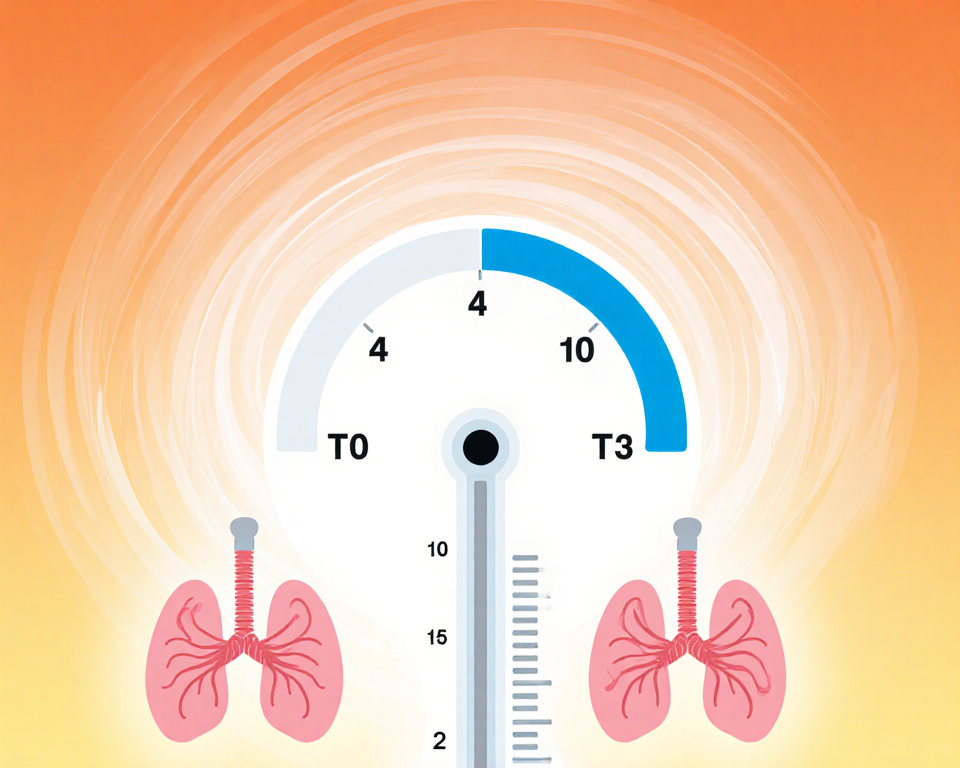Understanding the Blood Test Normal Range for Thyroid Function

When you hear “thyroid,” your mind might conjure images of a tiny butterfly-shaped gland perched behind your Adam’s apple. In reality, it’s a master regulator of your metabolism, mood, and energy levels. A simple blood test can reveal whether this gland is humming along or throwing a tantrum. But what does a blood test normal range for thyroid function actually look like? Let’s dive into the numbers, the science, and a few quirks that make thyroid testing both fascinating and, occasionally, a bit nerve‑wracking.
Why Thyroid Tests Matter
Your thyroid produces hormones—thyroxine (T4) and triiodothyronine (T3)—that act like the body’s internal thermostat. When these hormones are out of balance, you may feel sluggish, anxious, or even develop a sudden hair loss crisis. A blood test can pinpoint the issue, whether it’s an overactive (hyperthyroidism) or underactive (hypothyroidism) gland. Knowing the normal range is essential because it tells you where your levels sit relative to the healthy zone.
The Core Players
- TSH (Thyroid‑Stimulating Hormone) – the pituitary gland’s “go‑signal.”
- Free T4 – the active form of thyroxine circulating in the bloodstream.
- Free T3 – the active form of triiodothyronine, the powerhouse that actually fuels cells.
These three metrics are the stars of the show. When they’re all in harmony, you’re likely in the sweet spot of thyroid health.
The Standard Normal Ranges
Medical labs often use slightly different reference ranges, but most adhere to the following guidelines. Keep in mind that individual labs may tweak the upper and lower limits by a fraction, so always check the lab’s specific chart.
TSH
| Range | Interpretation |
|——-|—————–|
| 0.4 – 4.0 mIU/L | Generally considered normal. |
| <0.4 | Possible hyperthyroidism or pituitary issues. |
| >4.0 | Possible hypothyroidism or pituitary issues. |
Free T4
| Range | Interpretation |
|——-|—————–|
| 0.8 – 1.8 ng/dL | Normal. |
| <0.8 | Low, indicating hypothyroidism. |
| >1.8 | High, indicating hyperthyroidism. |
Free T3
| Range | Interpretation |
|——-|—————–|
| 2.3 – 4.2 pg/mL | Normal. |
| <2.3 | Low, possibly hypothyroidism or low T3 syndrome. |
| >4.2 | High, possibly hyperthyroidism. |
> “A thyroid that’s out of balance can make you feel like you’re on a rollercoaster—except the ride never ends.” – Dr. Elena Patel, Endocrinologist
How the Numbers Tell a Story
Imagine your thyroid as a finely tuned orchestra. If one section is louder or softer than the rest, the whole performance suffers. Similarly, an abnormal TSH level often signals that the pituitary gland is either overcompensating or undercompensating. For instance:
- High TSH + Low Free T4 – Classic hypothyroidism.
- Low TSH + High Free T4 – Classic hyperthyroidism.
But the plot thickens when the numbers don’t align. A patient might have a normal TSH but low Free T3—a condition sometimes called “low T3 syndrome.” This mismatch can cause fatigue and depression, even if TSH looks fine. It’s a reminder that the thyroid is a complex system, not a single‑parameter puzzle.
Rhetorical Question Time
Have you ever felt “off” but your doctor says everything looks normal? That’s the subtlety of thyroid testing—sometimes the numbers whisper, sometimes they shout.
Common Pitfalls and How to Avoid Them
1. Relying Solely on TSH
While TSH is the first line of screening, it’s not the whole story. A normal TSH can mask underlying issues with T4 or T3. Think of it as a thermostat that only reports temperature but not humidity. For a comprehensive view, always consider the full panel.
2. Ignoring Symptoms
Lab results are a guide, not a verdict. If you’re feeling fatigued, depressed, or experiencing weight changes, discuss these with your clinician even if your numbers fall within the normal range. Symptoms are the body’s way of saying, “Hey, something’s off.”
3. Forgetting About Medications

Certain drugs—like steroids, amiodarone, or even some antidepressants—can influence thyroid hormone levels. If you’re on medication, let your healthcare provider know; they may adjust the reference ranges accordingly.
A Quick Anecdote
When I was a medical student, a patient named Linda came in complaining of “constant brain fog.” Her TSH was 3.2 mIU/L, comfortably within the normal range. However, her free T3 was 1.8 pg/mL—just shy of the lower limit. After a targeted treatment plan, her fog lifted, and she could finally finish a crossword puzzle without a single blank square. The lesson? Even a tiny deviation can ripple into a big life change.
How to Interpret Your Results
When you receive your thyroid panel, it usually comes with a comment section. Look for phrases like “within normal limits” or “elevated.” If your results are borderline, your doctor may suggest a repeat test in a few weeks. Thyroid hormones can fluctuate due to illness, stress, or even the time of day.
Key Takeaway
- TSH is your first checkpoint.
- Free T4 tells you if the gland is producing enough hormone.
- Free T3 confirms whether the hormone is active and reaching cells.
If any of these are off, you’re likely dealing with a thyroid issue that warrants further investigation.
When to Seek a Specialist
If you’re dealing with persistent symptoms, or if your results are inconclusive, consider seeing an endocrinologist. Specialists have access to advanced testing—such as thyroid antibody panels—that can differentiate autoimmune thyroiditis from other causes.
The Bottom Line
The blood test normal range for thyroid function is your roadmap. It guides you and your clinician toward the right diagnosis and treatment. While the numbers themselves may seem dry, they’re the keys to unlocking a healthier, more energetic you.
Taking Charge of Your Thyroid Health
Armed with knowledge, you can now approach your next appointment with confidence. Ask your provider:
- “What do my TSH, free T4, and free T3 values indicate about my overall thyroid health?”
- “Are there lifestyle changes that could support my thyroid function?”
- “Should I consider a repeat test or additional testing?”
Remember, your thyroid is a delicate engine. Treat it with care, and it will keep you running smoothly—without the need for a constant “check engine” light.